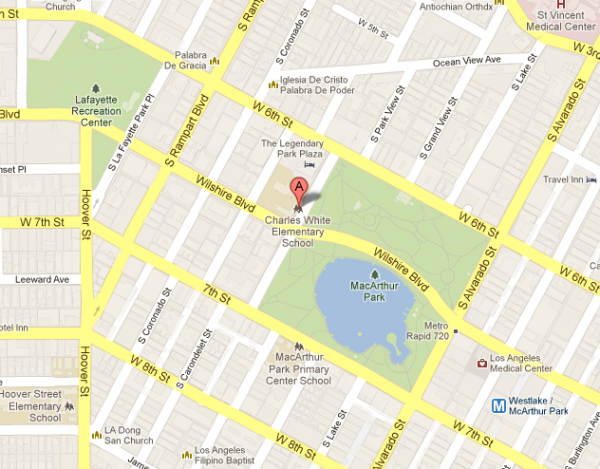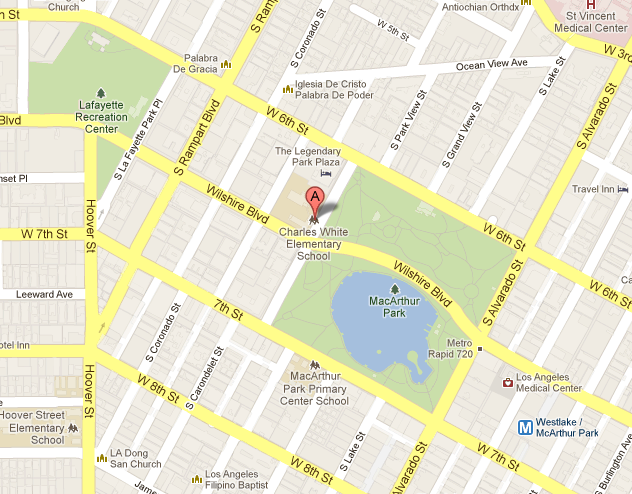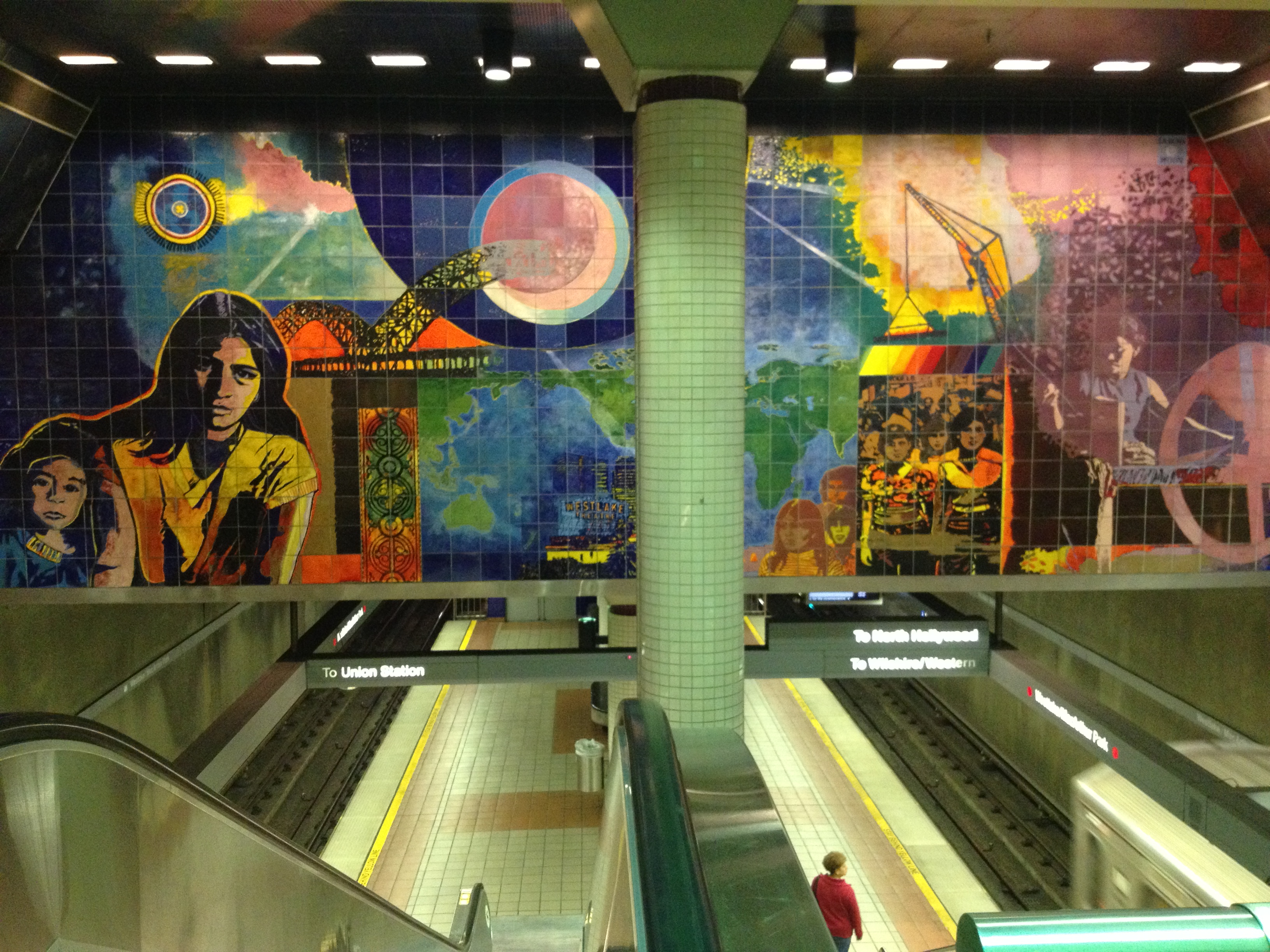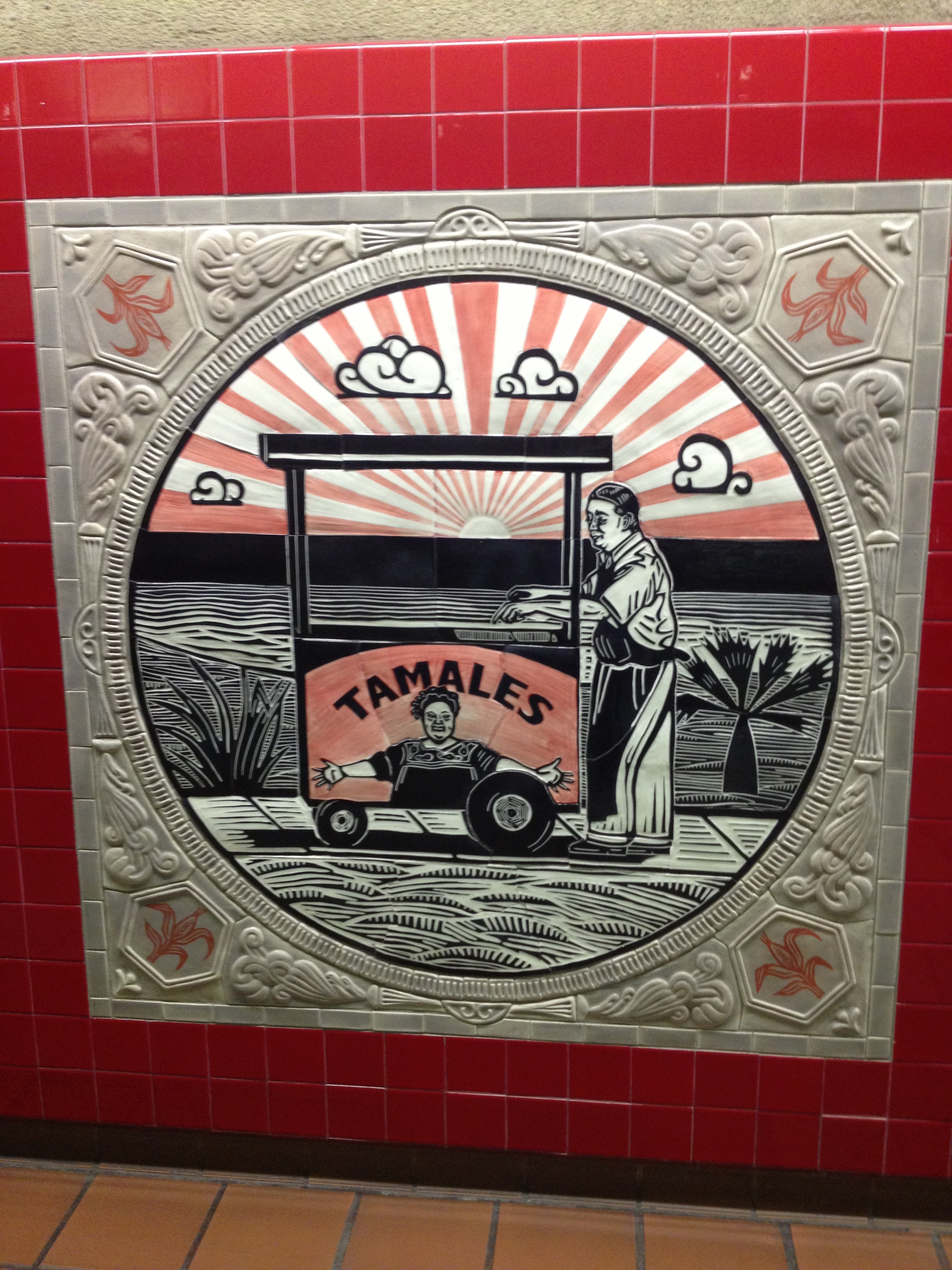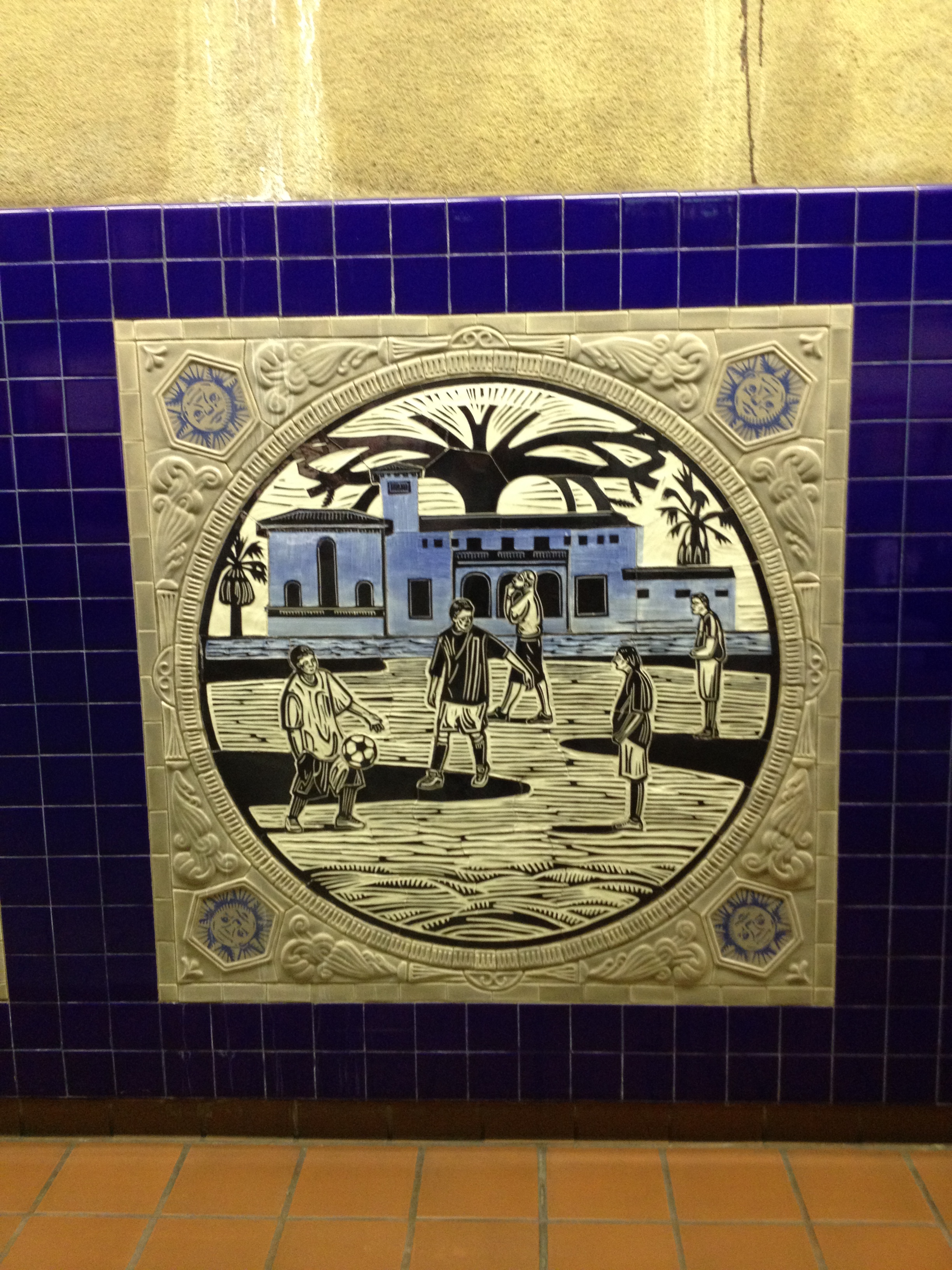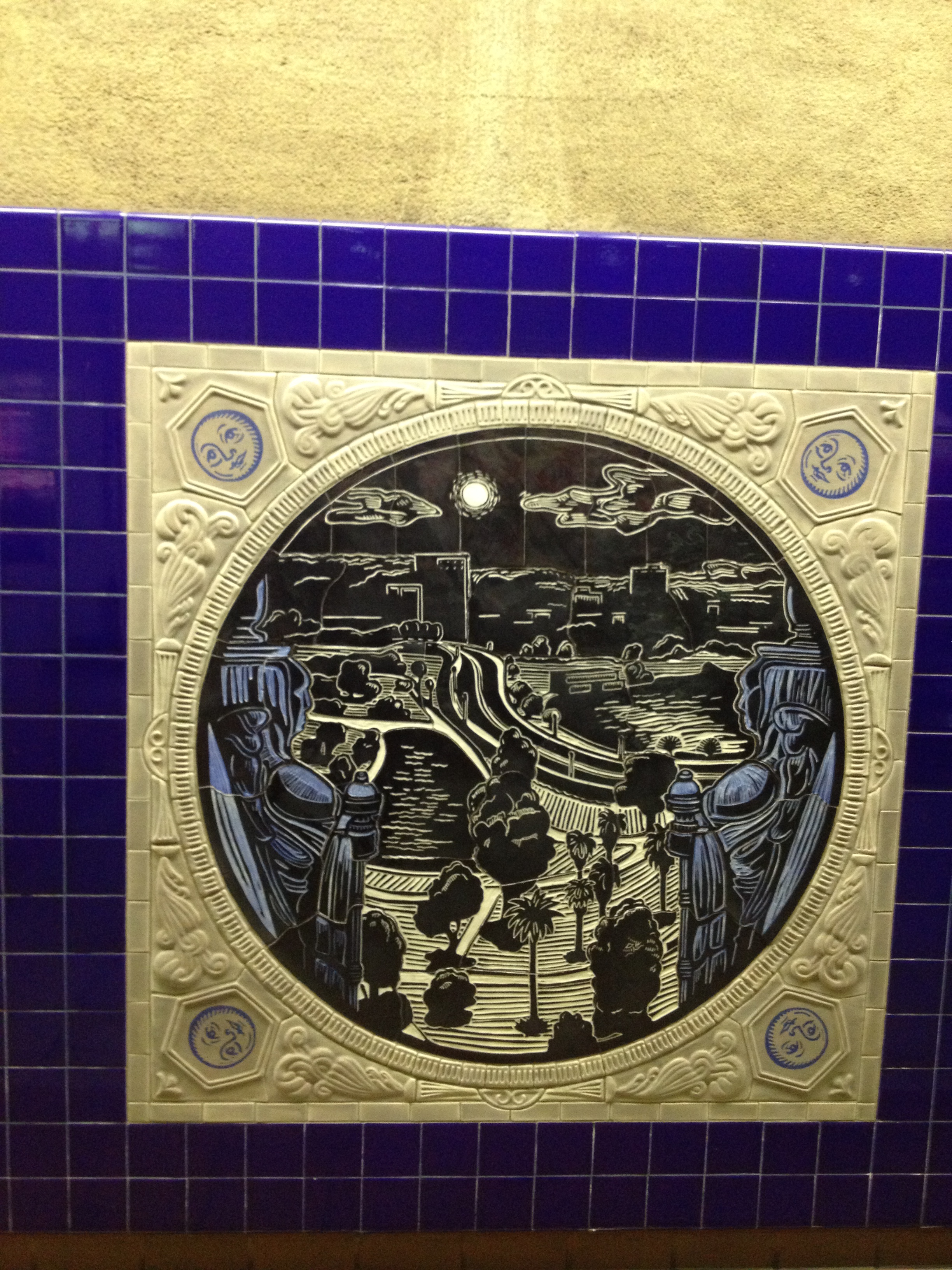My earliest memory of MacArthur Park is from the mid 1970s. My sister was taking a painting class for high school students at Otis College of Art and Design. I was allowed to hang out in the class even though I was only about six or seven. I remember painting the park from a second floor view out a window. The old Otis campus is now Charles White Elementary School. The LACMA art education exhibition Shinique Smith: Firsthand is now on view at the school and features works by the artist and objects from the LACMA's Costume and Textiles collection. This weekend is a great time to visit the exhibition as we will be presenting a free family and community day on Saturday from 10am–2pm. Drop by for free family tours, art-making, and scavenger hunts before heading out to explore the art in the neighborhood.
MacArthur Park was originally called Westlake Park. At the time, it was the western terminus of Wilshire Boulevard. It was built in 1890 and was highly influenced by the Olmsted Brothers concept for urban park design. Through the early part of the twentieth century, the park was a vacation destination, with fancy hotels and glamourous visitors and inhabitants. In the 1920s, Wilshire Boulevard was rerouted through the park, dividing it in two. In recent decades, the neighborhood has become a vibrant hub for Central American immigrants.
The best way to get to the MacArthur Park/Westlake neighborhood is by Metro. I really recommend taking the train. (The Redline and Purpleline both stop at the Macarthur Park/Westlake station). Besides that it is fun to take the subway, there is no parking hassle, and you reduce your carbon footprint, there is some amazing public art in the station.
When you get off the train, you’ll see glimpses of Francisco Letelier’s large tile murals El Sol and La Luna. Walk up to the next level for a better view. The murals flank the northern and southern walls of the station. Images of MacArthur Park community members, landmarks, and laborers are depicted in intense blues, reds, yellows, and oranges. See if you can find a woman sewing, the sun, a father and child, the metro tunnel, and the moon.
Now look for Sonia Romero’s artwork MacArthur Park: Urban Oasis, a series of porcelain mosaic murals installed at eye level, near the turnstiles on the northside of the station. Romero produced original linoleum cut prints that show scenes from the park and adjacent historical buildings. The prints were then translated into mosaic mural panels. Each panel tells a unique neighborhood story. Can you imagine yourself in one of these scenes? Playing soccer? Eating at Langer’s? Strolling by the water in 1902?
Walk to the center of the station and look up. Into the Light by Therman Statom hangs in a yellow tile skylight. Look for five ordinary objects: house, ladder, leaf, cone, and diamond. Notice the shadow patterns on the floor below, and how the light changes as you move around and under.
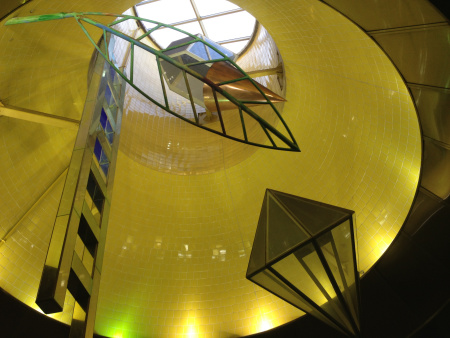 Therman Statom
Therman Statom
So much art and we haven’t left the station yet. As you emerge from the station, the first view across the street is the southside of the park. Notice your surroundings. Street vendors selling fresh squeezed orange juice, pupusas, tamales, tortas, CDs. Brightly painted advertisements and signs. Can you find the Westlake Theatre sign? That sign, and others like it around Los Angeles were repaired and refurbished by the Department of Cultural Affairs.
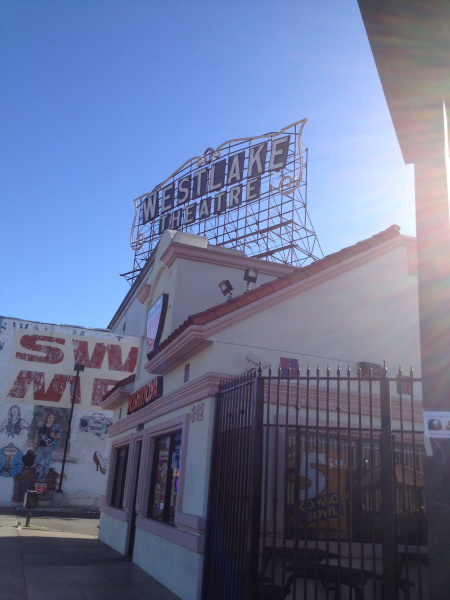
Throughout the park, there are a number of sculptures and murals dating back to 1920. The majority of the sculptures were installed in 1986 and 1987. Walk to the NW corner of Alvarado and Wilshire. Look east, and check out the huge mural of Jaime Escalante and Edward James by Olmos Hector Ponce, Los Angeles Teachers.
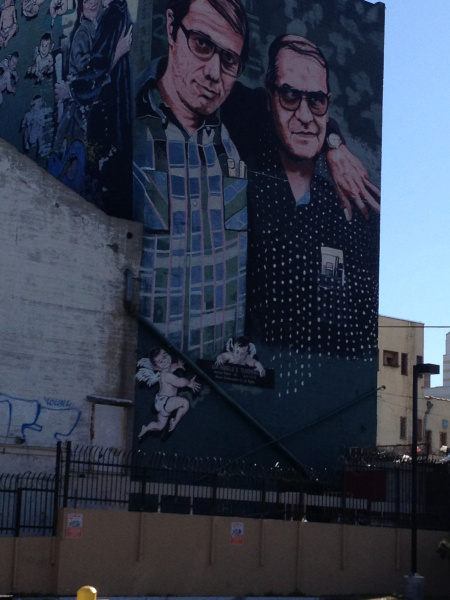 Olmos Hector Ponce
Olmos Hector Ponce
Turn around and enter the park. About a quarter of the way into the park, you’ll see a red sculpture elevated on a tall pedestal. You’ve found artist Franco Assetto’s The Big Candy.
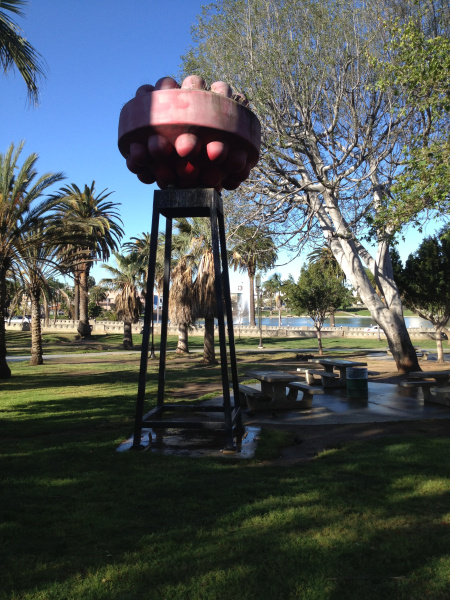 Franco Assetto
Franco Assetto
Continue walking past the soccer field and the playground. You’ll see Judy Simonian’s Pyramids. Look for the light blue one and the figure of a man. The tile of his face is missing. What do you think he looks like?
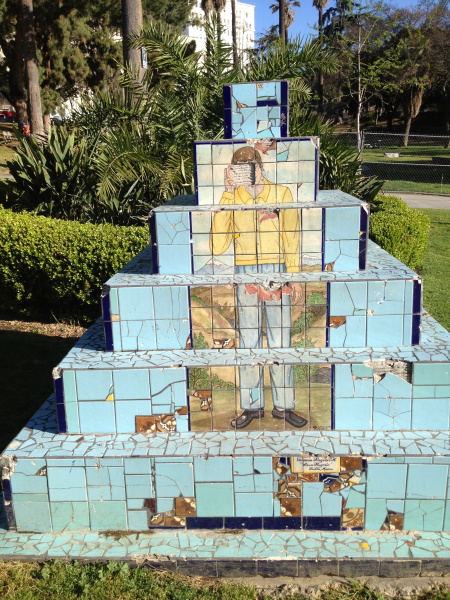 Judy Simonian
Judy Simonian
Continue walking until you walk out of the park. Look up and check out the entry arch designed by R.M. Fischer. You should be facing Charles White Elementary now. Go check out Firsthand! Before you leave the school campus, look for the Ken Twitchell mural that overlooks the basketball court and faces Carondelet Street. Lucky b-ball players!
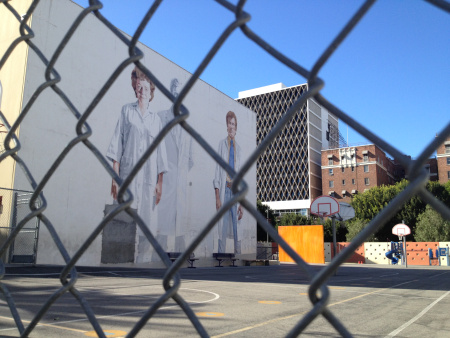 Ken Twitchell
Ken Twitchell
On your way back to the station, head in to the southside of the park, by the the lake. Look for George Hermes’ Clocktower-Monument to Unknown and Roger Noble Burnham’s MacArthur Monument. Think about how these artists pay tribute and commemorate.
 George Hermes
George Hermes
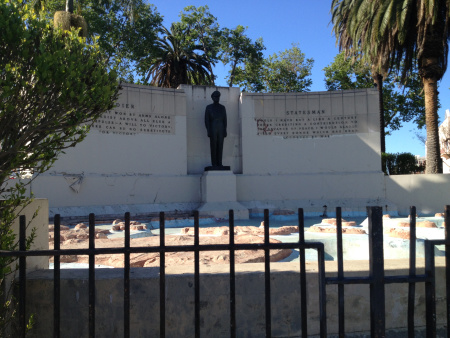 Roger Noble Burnham
Roger Noble Burnham
As I was walking back to the station, after eating a delicious tamale at Mama’s Hot Tamales, I was thinking about how this neighborhood is so L.A, where we can transform and be anything. Where an art school has become an elementary school; and the kids at Charles White Elementary have their own artwork hanging in a gallery, reflecting the art in their neighborhood and the previous incarnation of their school.
Alicia Vogl Saenz, Senior education coordinator



